
Lot 632
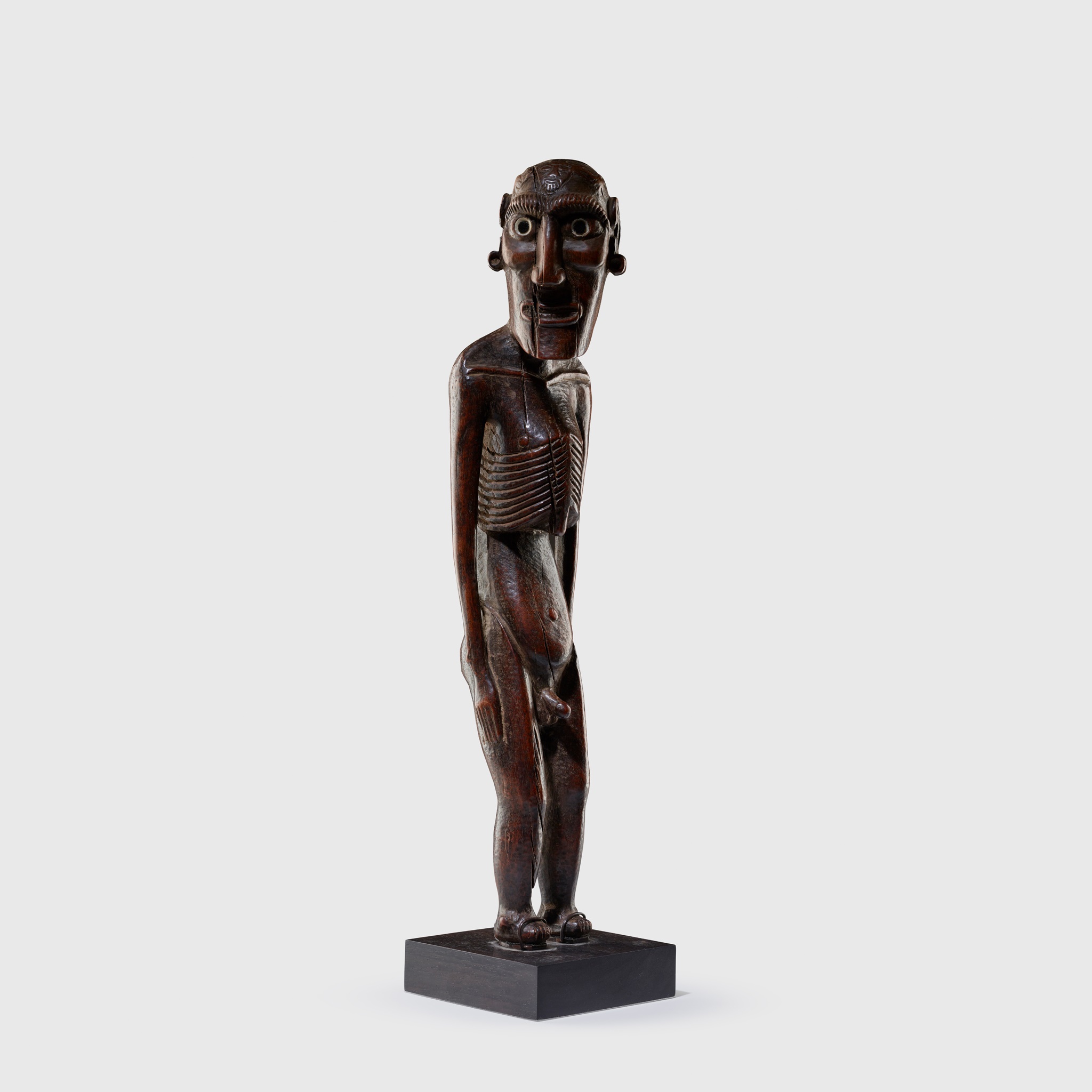
EASTER ISLAND FIGURE, MOAI KAVAKAVA
EASTER ISLAND
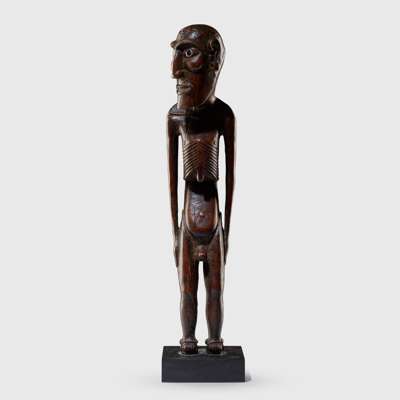
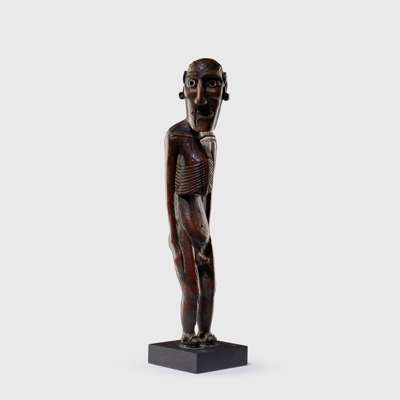
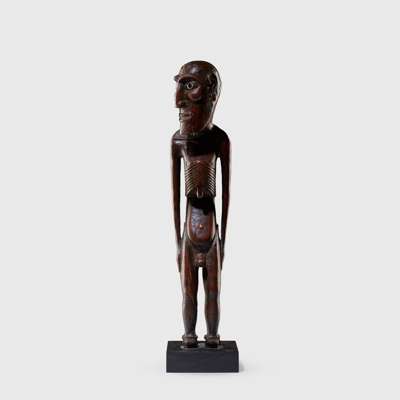
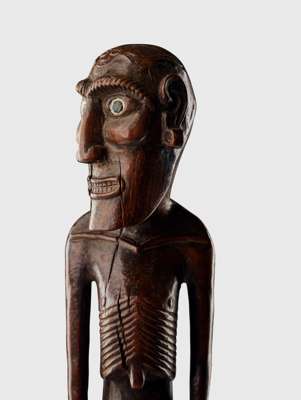
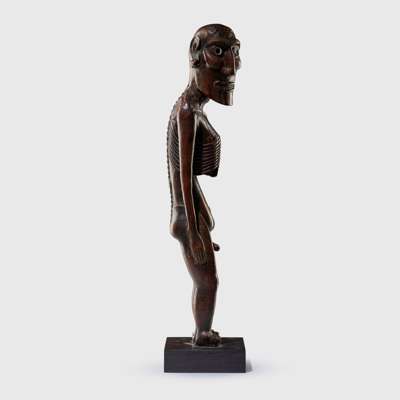
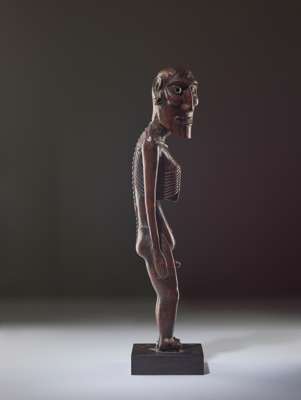
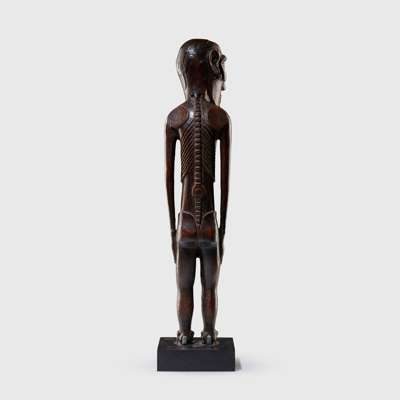
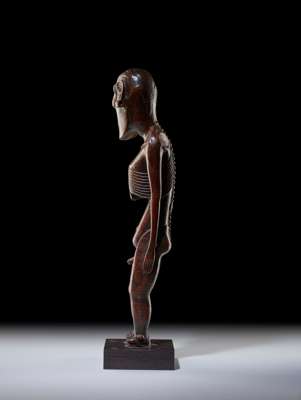
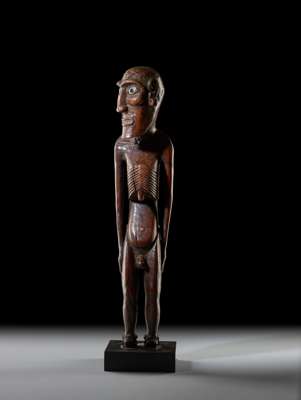
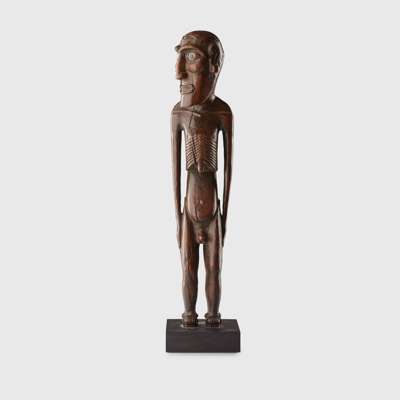
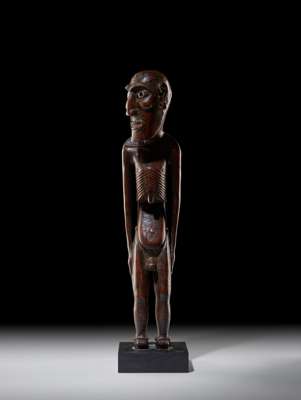
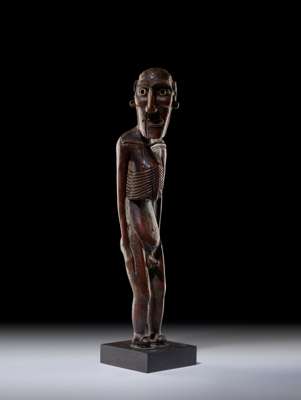
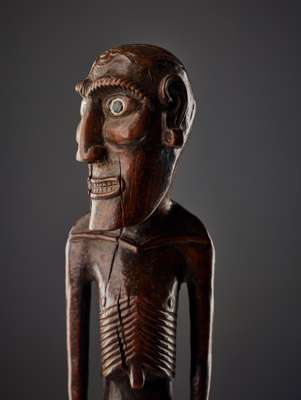
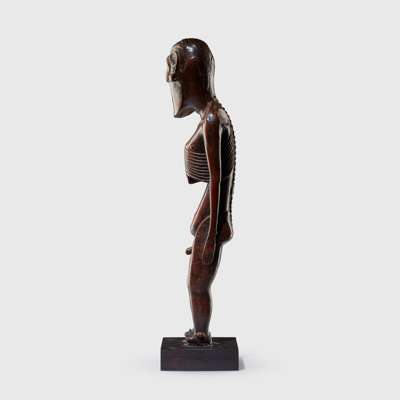


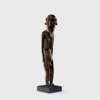
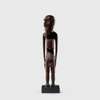

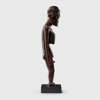

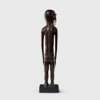


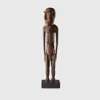



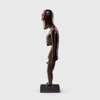
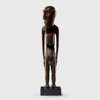
Auction: 30 November 2022 at 14:00 GMT
Description
carved wood and obsidian, with a forward tilted torso and head turned to the side, the body flanked by the two slender arms, the figure is typically emaciated, accentuated by the prominent ribcage and protruding vertebrae carved along the backbone, perforated at the back of the neck, the long elongated face with inset obsidian eyes, broad nose and grimacing mouth with bared teeth, the ears shown with plugs in the traditional manner, raised on a bespoke wooden mount
Dimensions
37.5cm tall
Provenance
Auction Atrium, 10th November 2010, acquired for £21,612
Note:
The skeletal, wooden figures (known as moai kavakava) produced by the Rapa Nui of Easter Island are amongst the most iconic representations of the human form in all of world art. Their name derives from the famous stone monoliths that dot the island (moai) and the prominent ribcage (kavakava). This emaciated character, whereby not only the ribcage; but the spine, hips and cheekbones are prominently exposed, led to considerable debate as to the meaning behind these enigmatic carvings. It was once thought that they represented starving ancestors, making reference to the islands well known history of ecological and societal collapse in the 18th – 19th century. It is now thought more likely that they represent the bodies of deceased ancestors, manipulated in secondary burial rites.
With its perforation to the back of the neck, the present piece was intended to be worn as a large pendant. Accounts from western visitors to Easter Island from the middle of the 19th century onwards record moai kavakava being worn during important ceremonies and dances by both men and women. Indeed, some accounts witnessed as many as twenty figures worn around the body of one individual at a time. When not in use, the figures were kept wrapped in cloth within the home, possibly as protective talismans.
Into the 20th century, the dreamlike characteristics of Oceanic art generally, and rapa sculpture specifically, greatly influenced the Surrealist movement of the early 1920s. The German Expressionist Max Ernst was greatly inspired by the moai kavakava, with the heads of the moai featured in the Thursday section of Max Ernst’s collage novel Une Semaine de Bonte. Whilst Andre Breton began collecting Easter Island moai kavakava from the age of fifteen and had amassed a major collection by the time of his death.





























